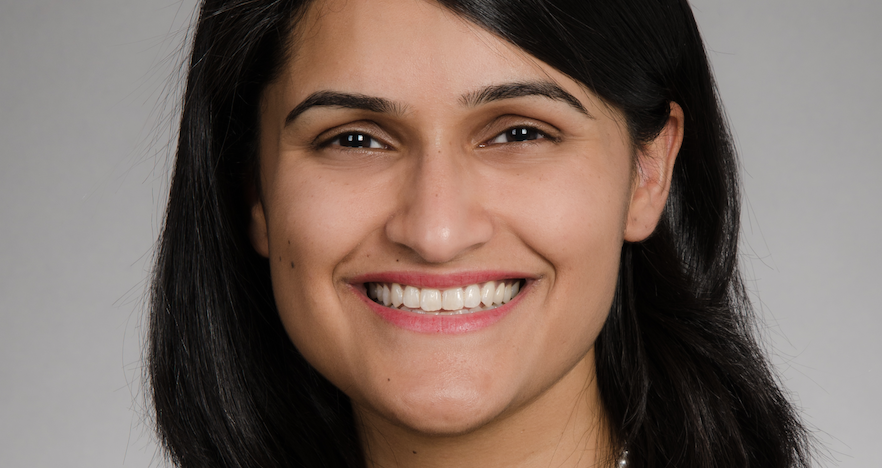Dr. Deshpande
Editor’s note: This is the second article in a series exploring the business aspects of the dental profession, from starting a practice and marketing to hiring staff and finances, based on Dr. Sampada Deshpande’s experiences.
Are you in a city that everyone tells you is saturated?
Can a whole city really be saturated with dentists?
Finding the answer is a little more complicated than dividing the number of people with the number of dentists.
Introducing an important tool that every entrepreneur should unlock as early as possible: demographics. If you learn how to use demographics to its best advantage, you will know better than to say that your city is saturated for dentists.
Why demographics?
Studying the demographic data of the city or township you’d like to practice in gives you information about the median income, number of people, number of dentists and dental offices, and economic activity in any given zip code. It can help guide you towards the neighborhoods to focus on in your search for a practice acquisition. It will also tell you which areas you want to absolutely avoid.
Think of how far your current dentist is. Would you go through 30 minutes of traffic to get to them? Or cross a freeway? Would you prefer being able to walk or bike to your dentist? All of this really depends on who you are and where in the U.S. you live.
I live in the beautiful city of Seattle. My husband and I chose our current dentist after we found out he was only a bike ride away. During the pandemic, my techie spouse began working from home. His downtown dentist was no longer convenient for him to get to, so we looked for another dentist and found a friend from my Study Club who practices by the lake. We now enjoy getting to our hygiene appointment after a refreshing bike ride!
Location is very important. Understanding the area, its local businesses, culture and people is crucial, and this data becomes easily available to you with a well-done demographic study. This study can also help you direct your marketing and hiring later.
Pros
- Demographic data will help you finalize which neighborhoods to focus on in a startup and acquisition.
- If you are able to locate an office with a dentist-to-population ratio of at least 1:3000 (this ratio will change significantly based on which part of the U.S. you are in), you will likely have fewer issues with new patient flow.
- Even if you choose to ultimately be in a location with a challenging ratio, having the data can tell you how and where to increase your marketing, understand the other offices working in the area, and give you more resources to become successful. For example, demographic studies also tell you how many languages are spoken in the area. Keeping in mind cultural sensitivities, hiring a diverse, multi-lingual and caring team, could ensure you have better success in the neighborhood.
How do I start this study? There are usually two options:
- Pay a company like Dentagraphics or Doctor Demographics to do it for you. Easier, however, expensive.
- Do it yourself; There are a variety of resources including zipwho, Google Maps, missouri.edu. Time consuming and may not lend very accurate results.
FYI: I did a combination of both of the above. If you are serious about understanding the neighborhood you want to be in and want to make the decision of practice ownership as predictable as possible, I’d recommend the same to you.
All of this is great, but what can I do as an associate right now?
Based on the intersection of the areas where the demographics favor you, try to find an associateship that is far, far away! So, you do not run into that painful non-compete clause down the road.
Many associateships will often require you to sign a non-compete that restricts where you can practice by a few miles (the highest I’ve heard from colleagues is 8 miles) around that practice. Usually, it restricts you from taking away any patients or staff for a few years out. This is something to think about if you were to become an associate in your hometown and also dream of owning a practice in your hometown. No can do. Getting out of such a non-compete requires lawyers and a hefty payment that takes away from your savings for a practice loan. Try to stay away from this problem as much as possible.
PRO TIP: I practiced as an associate 45 mins away from Seattle, for nearly two years, to avoid this problem. I had the opportunity to listen to a lot of business podcasts and audiobooks, as a result. All that time spent ultimately helped me start the New Dentist Business Club. I’d say it was a success J.
Best of luck! Next month, we discuss how to look for a practice in the area- on and off market, and how to get ready for practice ownership!
Editor’s note: Get location-based demographic information using the interactive data-mapping tool, Practice Location Map for Dentists. Find data on the distribution of active dentists, population median income, as well as the number of federally qualified health centers with dental services in each state.
Dr. Sampada Deshpande is a general dentist based in Seattle. A foreign trained dentist from India, Sampada earned her DDS from the University of Washington in 2018, where she is also a current LEND trainee. Outside of clinical dentistry, she enjoys teaching at the New Dentist Business Club, biking with her husband, and reading books on Finance & Management. You can reach her directly at @dr.deshpande on Instagram or visit her website www.sampadadeshpandedds.com for more information.


